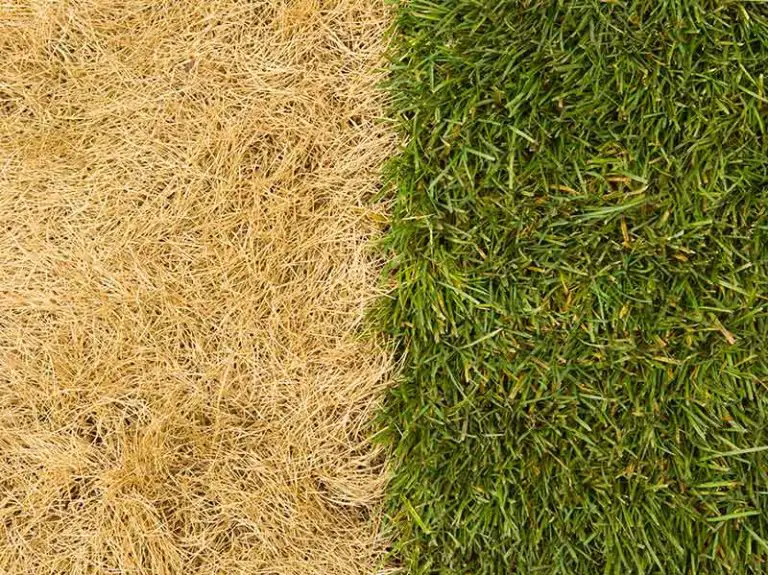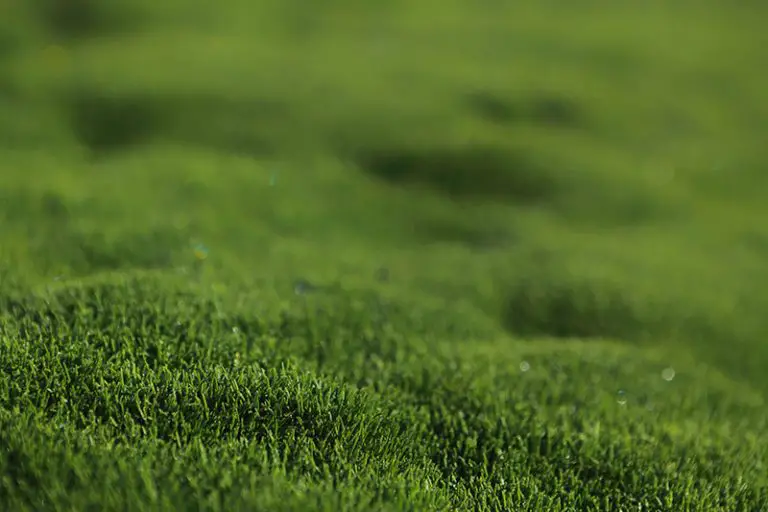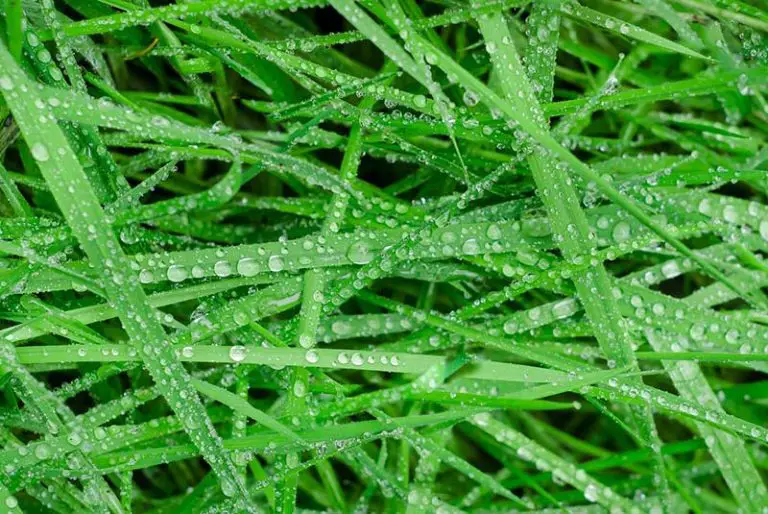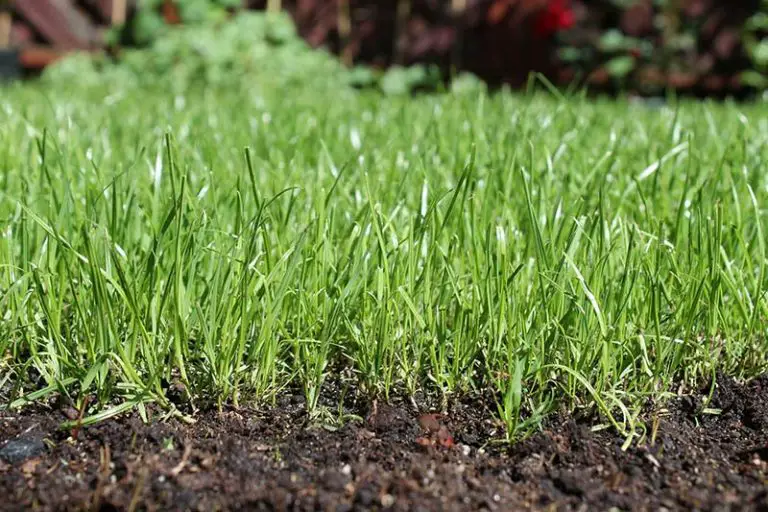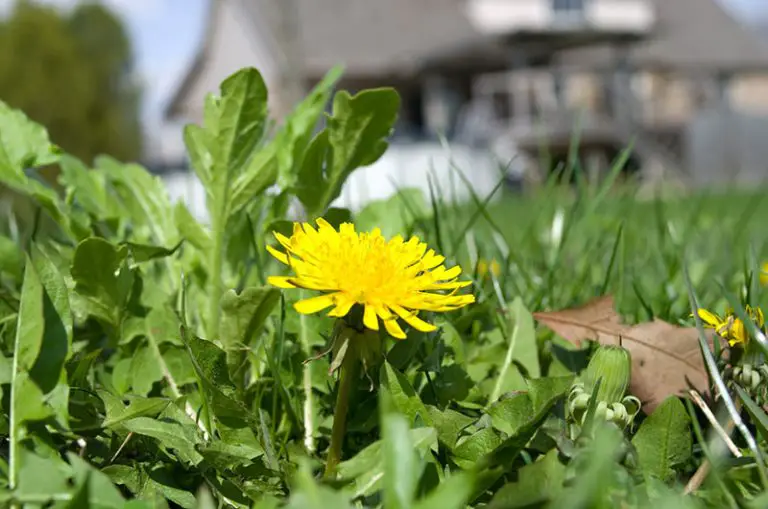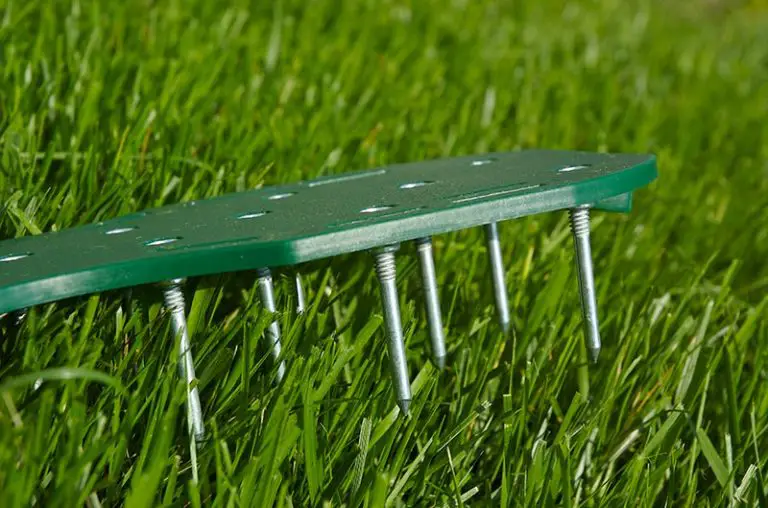What is Mulch?
In the simplest terms, mulch is the name given to any loose material that can be laid across the surface of soil to act as a protective covering. By mulching the soil around your new or established plants or grass, you provide your lawn or garden with a host of various benefits that help to keep its soil in top condition for growing.
Whether you want to improve moisture retention and temperature moderation, suppress weed growth, or enrich the soil with a host of slow-release nutrients, mulching is the easiest way to achieve all of these benefits in one single job. A range of materials can be used as mulch, including leaves, grass clippings, shredded paper, rocks, glass, and more.
Read through this guide to learn more about the various types of mulch available along with their best uses around your yard or garden.
What Is Mulch?
Mulch is a soil additive commonly used in outdoor gardening as a protective covering for the exposed surface of the soil. It can be made from either organic or inorganic materials, but most choose a mulch made from organic biodegradable materials as these are better for the environment and can be made for free using waste materials around the home.
What is Mulch Used For?
Improves Look of Garden and Lawn
The main reason why most people choose to mulch is that it improves the overall look of the plants or grass growing in the soil that you apply it to. By protecting the soil with mulch and all of the following benefits it brings, you’re giving your plants the optimal environment to grow strong, lush, green foliage, and robust root systems. Also, the mulch can be used to cover up areas of the soil or grass on lawns that have been damaged from direct sunlight or improper care. It can be applied to cover up brown or yellow grass, or areas of dusty, unattractive soil.
Aside from the plants, the mulch itself comes in many different types which all have different textures and colors, meaning it can be used to beautify a yard and plan out intricate landscape designs. For instance, you could use a mulch to demarcate paths and specific areas of your yard.
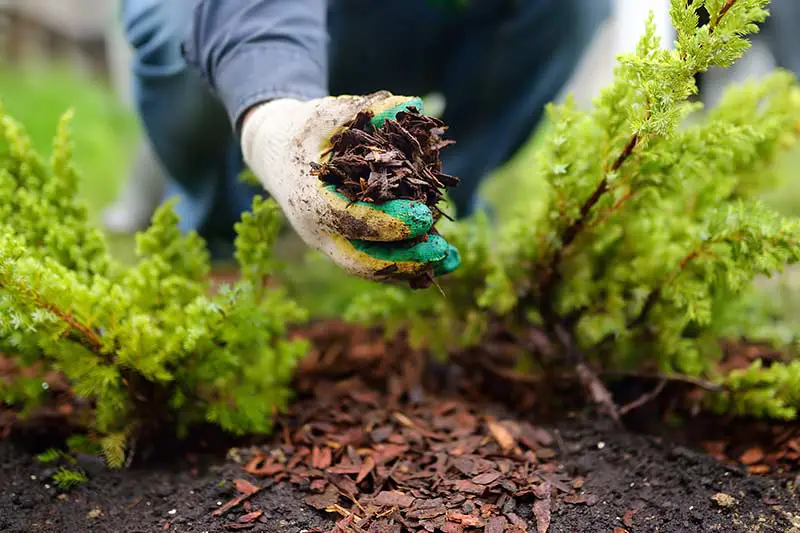
Helps Soil Retain Moisture
A layer of mulch placed on the soil surface will act as an insulating barrier that protects moisture in the soil from being lost to evaporation from heat and wind. The mulch itself holds onto moisture, meaning that you can significantly reduce the frequency of watering and the amount of water that you apply each time. The biggest benefit of this is that it encourages drought tolerance in the growing plants or grass, and has a particular strength in helping the strong growth of trees and shrubs.
Moderates Temperature of Soil
Mulch helps to buffer the shift in temperatures of the soil, protecting plants and grass from the effects of heat stress. Plants have feeder roots – responsible for taking up the nutrients for the plant – and they grow in the first few inches of soil below the soil surface. These roots are very susceptible to becoming stressed in extreme heat or freezing temperatures, so mulch helps to keep the roots in the best condition regardless of changes in the weather.
Furthermore, hot sunlight can create a hardened crust of soil on the soil surface, which prevents water from penetrating through the surface to the lower layers. When the winter season sets in, the drop in temperature leaves the feeder roots vulnerable to an overnight frost or sustained period of freezing temperatures without the protection of a layer of mulch.
Protects Soil from Runoff and Erosion
Mulch can protect soil from becoming eroded due to harsh weather conditions. As we’ve mentioned, heat from direct sunlight can cause a hardened crust to form on the soil surface, making the surface impermeable to water. This means that water from rain and irrigation flows over the soil surface, causing particles of soil and any soil amendments to be washed away with it. Soil in this state can also be eroded by the wind. With that said, even pliable soil can be at risk of erosion if it’s left exposed – when it’s raining heavily, the rainwater will run from the highest to the lowest point in the landscape, carrying away with it chunks of topsoil from your yard or garden. Eroded soil will then need to be fixed by leveling and/or grading the yard.
Also on the topic of extreme weather, heavy pounding rain or hail can cause areas of your soil to become compacted, in the same sense that foot traffic does. Compacted soil leads to unhealthy plants or grass with shallow root systems, which then requires an aeration job to get the soil back into good condition for growing. Mulch protects the soil from all of the aforementioned extreme weather conditions, which in turn reduces the necessity of the various jobs that are needed to fix the soil after it has been exposed to weather such as this.
Suppresses Germination and Growth of Weeds
Although it can’t eradicate them completely, mulch will significantly help to reduce the spread and amount of weeds growing in the soil it has been applied to. By applying a layer of mulch, the weed seeds in the soil have insufficient access to the sunlight that they need to germinate. The mulch also helps to hold the seeds in place, preventing them from blowing around in the wind and spreading to other areas of your yard. Even if some of the weed seeds do germinate, the mulch will smother them making it harder for the weeds to become established. After mulching, the areas of the yard that you start to see weeds growing in are an indication of the areas that need a topping-up of mulch.
Suppresses the Spread of Soil-Borne Disease
Many soil-borne diseases are spread through water, so a layer of mulch helps to protect the soil surface from being contaminated with disease pathogens. These disease pathogens live in the soil, and while some infect plants through their root systems, the majority need to make contact with the foliage of the plant to infect it. Rainwater or water added through irrigation can carry the soil-borne disease pathogens from the soil onto the lower parts of plants’ foliage. When covered with mulch, the plants or grass are protected from being infected in this way.
Enriches Soil with Nutrients and Organic Matter
The organic matter in mulch gradually decomposes after it has been added to the soil, enriching it with nutrients and encouraging the presence of friendly microorganisms. It’s recommended that soil should be made up of around 30% organic matter by volume in order to be in its healthiest condition. Native soils, such as clay-heavy or sandy soil, often lack this amount of organic matter. These types of soils can be amended with compost or fertilizer, but mulch is an even better option due to the additional benefits that it brings. The gradual decomposition of the organic matter in the mulch feeds the microorganisms living in the soil, which in turn feeds the grass or plants living in it. The organic matter also helps to improve the drainage of the soil during this process of decomposition. It should be noted that these particular benefits are only brought about by organic mulches, as inorganic mulches lack the necessary organic matter.
Reduces Waste that Would Otherwise Go to Landfill
Organic mulches are often made from waste materials that would otherwise be disposed of and sent to landfill. It has been reported that 60% of all materials that end up in landfills can be composted, used as mulch, or recycled. So, before you go throwing out your trash, find out if it can be used some other way in your home such as adding it to a mulch or on your compost pile.
Types of Organic Mulch
Organic mulch is that which has been made from completely natural, biodegradable materials. Typical materials used in organic mulch include:
Leaf Mulch
- Lawns
- Flower beds
- Vegetable gardens
- Trees and shrubs
Shredded leaf mulch is arguably the best type of mulch you could add to your garden, as it can be applied anywhere, from lawns to vegetable gardens to flower beds. This mulch is also particularly suitable for woodland gardens. One of the biggest benefits is that it encourages the presence of earthworms in the soil, which help to aerate and fertilize the soil as they move around and digest the organic matter within it. You can mow over leaves to create free instant leaf mulch in fall.
The main drawback that may put people off using shredded leaves for mulch is that it isn’t very aesthetically pleasing, which may make it unsuitable for more formal settings. If this is a concern, you can spread a layer of the mulch in spring before the plants spread out, as the mulch will likely blend into the view after a small while. Also, if you spread it over the soil in your vegetable garden during the fall, the mulch will start to decompose over the winter period.
It should be noted that for best results, the leaves should be shredded before being used as mulch. The smaller the organic matter, the quicker it will decompose, therefore shredding the leaves into smaller pieces is recommended – we suggest using equipment such as the Sun Joe Electric Leaf Mulcher to make this process easier. Whole unshredded leaves can be used, however, they tend to mat together and can repel water during rainfall. If you have to use unshredded leaves then this issue can be avoided by raking them when they appear to be matted together.
Bark or Woodchip Mulch
- Trees and shrubs
- Untouched garden beds
Mulches made from bark or woodchips are best suited for use around shrubs or trees, or in garden beds in which you don’t tend to do a lot of digging, such as foundation plantings and front walkways. These mulches are quite woody, and don’t mix well into the soil – this makes it a hassle to move the mulch around when planting new plants, hence why they’re only recommended for areas that aren’t usually dug around in.
The main benefit of bark or woodchip mulches is that they last a lot longer compared to finer types of organic mulch, as their woody make-up takes a longer time to break down. They also improve the drainage of the soil and help the soil’s ability to retain moisture.
Hardwood Mulch
- Alkaline-loving plants
Hardwood mulch is made up of the leftover materials from tree-trimming jobs and old wooden refuse, making it a relatively inexpensive type of mulch. As the wooden matter breaks down into an alkaline form over time, hardwood mulch is best used around plants that will survive in alkaline soil. It could be used around plants that prefer acidic soil, however, this would require you to acidify the soil with fertilizer or other pH adjusting materials after it begins to break down.
Hay or Straw Mulch
- Vegetable gardens
Straw and salt hay mulches are best suited for use in vegetable gardens. Straw mulch forms a barrier that prevents soil and soil-borne diseases from splashing onto the lower levels of the surrounding plants’ foliage and can help to make garden paths less muddy.
Straw mulches come from grain crops and are made up of just the stalk of the crop. For this reason, straw mulches don’t tend to contain any seed heads. They break down more slowly than hay mulches, however, they’re a bit easier to work with.
Hay mulches are derived from grass crops, such as bluegrass and fescue, meaning that they are likely to contain seed heads. Another concern with hay mulches is whether the grass crop they have been derived from has been treated with a persistent herbicide, as this will take years to dissipate and may end up ruining the soil that the mulch has been added to.
In terms of benefits, these mulches create inviting environments for spiders and other friendly insects that help to control the population of other non-friendly garden pests. Also, they’re very easy to rake up or work down into the soil when it comes to the point of growing a new crop or covering up the vegetable garden or flower bed completely. The straw in the mulch takes a relatively long time to decompose, so this type of mulch will likely last the entire growing season without the need for reapplication.
Pine Straw or Pine Needle Mulch
- Flower beds
- Trees and shrubs
Pine needles can be used as mulch in flower beds or around trees or shrubs. The pine needles take a long time to decompose, and even though they’re acidic, they won’t have much of an impact on the pH of your soil.
A drawback to this type of mulch is that it’s a bit more difficult to spread, however, once it has been placed on the soil it will hold together well and can be reshaped to your liking. It’s recommended to wear long sleeves and gloves when applying pine needle mulch to protect your arms from scrapes and the sticky residue that coats the needles. You can easily purchase pine needle mulch such as this USA Pinestraw mulch.
Grass Clippings
- Lawns
- Remote areas of garden
As a mulch, grass clippings vary in effectiveness and are best suited for your lawn and more remote parts of your garden where you’d like to suppress weed growth. Like most organic waste that’s made up of green plant debris with a high content of water, grass clippings will decompose very quickly. Over the process of decomposition, the clippings will turn into a slimy odorous substance, so they should be used with discretion. Also, grass clippings have a tendency to become matted down which may prevent water from reaching the soil.
For best results on the lawn, you should use a mulching mower to mow your grass and simply leave the clippings where they fall on the lawn. The clippings will break down relatively quickly and will enrich the soil with a host of beneficial nutrients (particularly nitrogen) as they decompose.
To use the clippings elsewhere in the yard such as on a vegetable garden or flower bed, bag them and then spread them wherever you want to suppress weeds and provide nutrients to the soil. However, you should avoid spreading any clippings if the grass has been recently treated with chemicals like herbicides or pesticides, as these can be very damaging to flowers and vegetables. There are a number of ways that untreated grass clippings can be repurposed around your yard, which we have gone into detail about in our article What To Do With Grass Clippings.
Plant Hulls
- Flower beds
- Vegetable gardens
- Trees and shrubs
The hulls of materials such as rice, peanuts, or buckwheat are becoming increasingly available as mulch materials. Plant hull mulch is lightweight and has a uniform texture that allows water from rain and irrigation to pass through, and it also works to aerate the planting area as it becomes incorporated into the soil over time.
As these materials come from a food crop, it’s important to keep in mind that there is a chance the origin material was treated with a chemical herbicide or pesticide. This may remain on the hull and transfer into your garden where it can cause damage to your growing plants.
Cocoa Bean Mulch
- Flower beds
- Vegetable gardens
The shells of cocoa beans can be applied to your flower beds and vegetable gardens as an effective mulch. This mulch is weed-free and organic; to separate the shell and the bean, the cocoa beans are roasted, and this process means that the resulting shells are sterilized and free of potential contaminants.
On the other hand, the drawback of cocoa bean mulch is that the beans may have been treated with chemicals that may transfer to your soil and cause problems for the surrounding plants. They also contain both caffeine and a substance called Theobromine which can be highly toxic if ingested by dogs. Even if you don’t own a dog yourself, keep in mind that other dogs in the neighborhood may be attracted to the sweet smell of the mulch and can become very sick (or even die) if they ingest it.
Shredded Paper or Newspaper Mulch
- Flower beds
- Vegetable gardens
Both paper and newspaper that’s been shredded can be used as organic mulch in your flower beds or vegetable garden. You don’t need to worry about the ink, as most inks used on paper or newspapers these days are organic and soy-based, particularly the black and white sections of newspapers.
The main benefit of this type of mulch is that it has an excellent ability to retain water, helping to keep plant roots and soil sufficiently moist. Layering paper mulch also helps to suppress weed growth and helps to maintain consistent soil temperatures. By adding enough layers, paper mulch can even be used to smother established grass to quickly create the space for a new garden bed.
Living Mulch
- Lawns
- Flower beds
Living mulches are a term given to live plants that behave the same way that a mulch does. This includes ground-hugging plants, such as creeping thyme or phlox, or cover crops, such as vetch or clover.
All of these plants will bring a host of benefits to the health of your soil, particularly the cover crops. They act as a mulch by shielding the surface of the soil from sunlight, which helps the soil to retain moisture and prevents weed seeds from germinating. The only real drawback with this type of mulch is that some don’t like the aesthetics of them, however, they are a great option to keep your soil and plants healthy if you don’t mind how they look. For instance, while many opt to get rid of clover because they see it as a weed, there are a host of benefits that come from planting clover on an existing lawn.
Mushroom Compost
- Alkaline-loving plants and vegetables
Mushroom compost is a light, easy-to-use mulch, often bought as ‘spent’ mushroom compost. It has a high (alkaline) pH, making it best suited for alkaline-loving vegetables that thrive in high pH soil, such as kale, cabbages, and broccoli. Avoid using it around ericaceous plants that suffer in high-alkaline soil, such as rhododendrons, camellias, and heathers.
Well-Decomposed Horse Manure
- Roses
- Vegetables, particularly squashes and pumpkins
Horse manure that is well-decomposed makes a suitable mulch for hungry plants such as roses and vegetables, particularly squashes and pumpkins. This mulch will enrich your soil with nutrients and retains moisture very well. It’s important that the manure is well-decomposed, i.e. has been left to rot for a minimum of two years, otherwise it may end up burning the plants’ foliage and can actually remove essential nutrients from the soil as it decomposes.
Types of Synthetic Mulch
Synthetic mulches are those which are made up of non-organic, non-biodegradable materials. Types of synthetic mulches include
Plastic Sheeting
- Vegetable gardens
Plastic sheeting is best suited for vegetable gardens. When the black plastic film is spread tightly over a smooth soil surface, the black color transfers the heat from the sun to the surface of the soil, which creates a microclimate that is about three degrees hotter than the rest of the garden. As the plastic film stays warm and dry, it helps to protect the fruits of vining crops like melons, strawberries, and cucumbers from rotting. It also brings about the other benefits of many mulches like the suppression of weed growth and improving the soil’s ability to retain moisture.
Landscape Fabric
- Trees and shrubs
- Foundation plantings
Landscape fabric, also referred to as geotextiles, can be used around plants that require relatively little fertilization and weeding, such as trees and shrubs and around foundation plantings. As you won’t be working in these beds regularly, the landscape fabric provides all of the benefits of mulch without needing to worry about having easy access to the soil to apply fertilizer or to weed the bed throughout the summer months. As this type of fabric is porous, you won’t need to worry about cutting holes to allow water through unless the fabric becomes blocked.
The main drawback of landscape fabric is that geotextiles tend to degrade over time when they are consistently exposed to light. You can counteract this by covering the fabric with a second layer of a different type of mulch, which you may want to do regardless of practical reasons as many find the fabric to be aesthetically displeasing. It should also be noted that if used around shrubs, the shrub roots may grow up into the landscape fabric meaning that they will be ripped up on the removal of the fabric.
Rocks or Gravel
- Heat-loving plants
- Gravel gardens
- Rain gardens
- Mediterranean herb gardens
Rocks and gravel can be used as mulch in areas that have a particular requirement for drainage, or in beds with plants that prefer a bit of additional heat, such as rain gardens or Mediterranean herb gardens.
These mulches are great at sealing moisture into the soil and suppressing the growth of weeds. The main drawback of this mulch is that the stones are hard to remove completely once they’ve been applied, so you should weigh up all of your options before choosing this mulch to apply to your garden. Also, they can heat up in the sun and cause the temperature in the planting area to become too high for a lot of plants to grow. It’s due to this reason that rock or gravel mulches are only suitable for use around heat-loving or drought-resistant plants.
Glass Mulch
- Plants that are suitable for rocky soil
Glass mulch is made from recycled glass which has been tumbled in order to smooth down any sharp edges. It can be placed in any part of your garden or yard where you would put rocks or pebbles to act as an effective mulch. It has the added advantage that it’s very aesthetically pleasing and can be used tactically to improve the look of your yard.
A disadvantage of using glass is that it’s one of the more expensive options compared to other types of organic mulch. It also necessitates an extra barrier between the glass mulch and the soil, requiring you to place some landscape fabric or plastic in between the two layers – this prevents the glass from sinking into the soil too deep over time.
What’s The Difference Between Mulch and Compost?
Although they can be used for similar purposes, mulch and compost are two different things. While compost works beneath the soil surface to enrich the top layer of soil with nutrients and any other weed or pest control benefits it may have, mulch is instead applied on top of the soil surface to control weed growth, retain moisture in the soil, and regulate the soil’s temperature.

